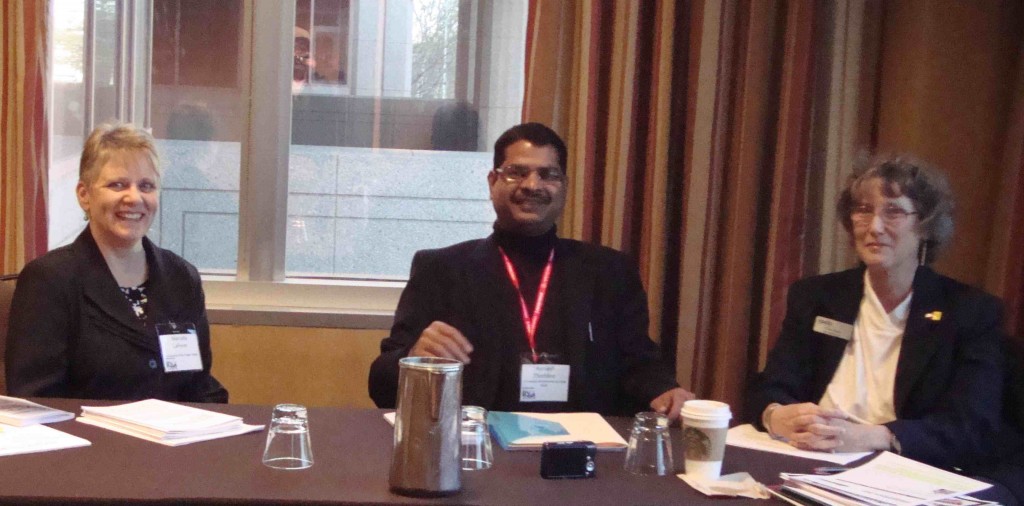Greetings from New Mexico and the annual conference of the Western States Communication Association. Don’t be too jealous. It has been windy and cold in the high desert, making me happy that I brought my good, Canadian winter coat. On the other hand, the days have been warm inside while meeting colleagues, hearing about teaching practices, and representing the University of the Fraser Valley in two research presentations.
One interesting teaching practice that both faculty and students may enjoy bringing to CMNS 235, Oral Communication, is the idea of using music to segue from speaker to speaker. Patricia O’Keefe from the College of Marin asks each student in her oral communications class to pick a song that they want to use as their theme for the semester. Throughout the semester, various classmates act as the “DJ” who spins the “anthem” as the student walks up and prepares to present. Pat says this practice has had a phenomenal effect in calming nerves and creating community. A song she particularly liked was Andy Grammer’s “Keep Your Head Up.” Leave a comment and let us know what you think about this strategy.
In preparation for this conference I had the pleasure of organizing two panel presentations that ended up garnering lively discussion. The first panel (at 8 o’clock on a Monday morning I might add) was titled, “A roundtable on theory-to-practice: Applied Communication for social change.” Dr. Avinash Thombre (seated in the centre of the above photo) started the session off explaining a project sponsored by the U.S. State Department that brought university students from Pakistan to Little Rock, Arkansas to learn about the democratic process. His role was to help them understand Diffusion of Innovation theory in thinking about how they could use their knowledge once they returned to their homes. This presentation was followed by Christine Hollis (seated right), the Director of a program called “Kids Count” (New Mexico Voices for Children) who spoke about the use of a variety of message design theories that her organization had used to try to persuade state legislators to increase funding for early childhood education. To wrap up the presentations and lead into discussion, I presented a piece on the use of my 9P planning model in the 2011 “Appreciating You and I” community dialogues organized by Abbotsford Community Services. The audience was enthusiastic about the topic; their questions and comments about their own experiences took us right up to the closing minutes and were brought to a close by people trying to get into the room for the next session.
The second panel I had the pleasure of organizing continued the conference theme of social change but concentrated on bringing social change to the post-secondary classroom through the use of culturally responsive teaching practices. I had the pleasure of talking about UFV’s efforts to indigenize, and my own research on reconciling instructional communication theory between the use of Bloom’s three “learning domains” and the four quadrants of the medicine wheel. Elizabeth Root from Oregon State University explained how she created a program to pair her intercultural communication students with international students on campus. Kris Kirschbaum, who experienced her own culture shock in taking a faculty position in North Carolina, talked about similar issues of working with students who had very little experience outside of their own communities and helping them to understand cultural differences and similarities. The fourth speaker, Willow Anderson, reinforced the Canadian presence on the panel. She traveled all the way from Newfoundland to talk about struggles in making sure that as instructors of oral communications we don’t focus exclusively on Aristotelian traditions of public speaking theory. This topic led to an especially lively discussion about alternative ways of configuring assignments and including choices for presentation rubrics. I am definitely going to bring some of these ideas back to discuss with my colleagues at UFV.
See you all soon!

